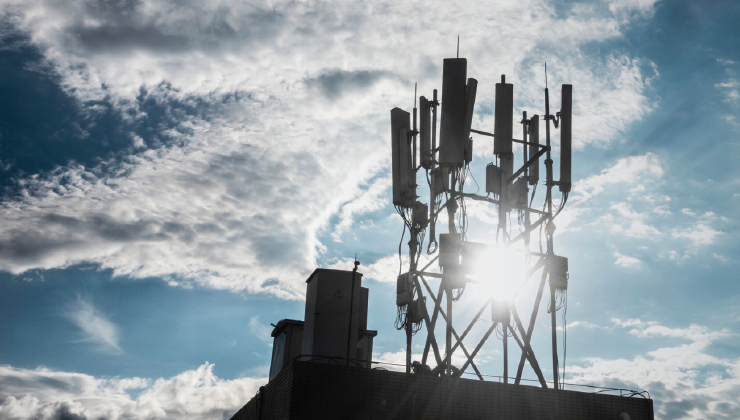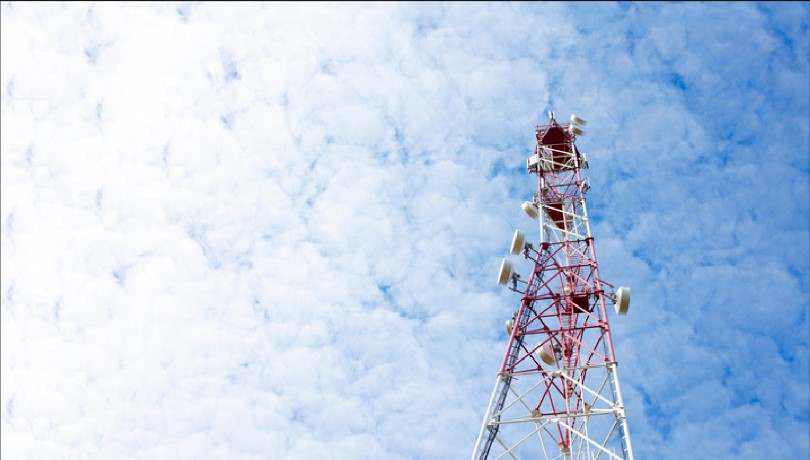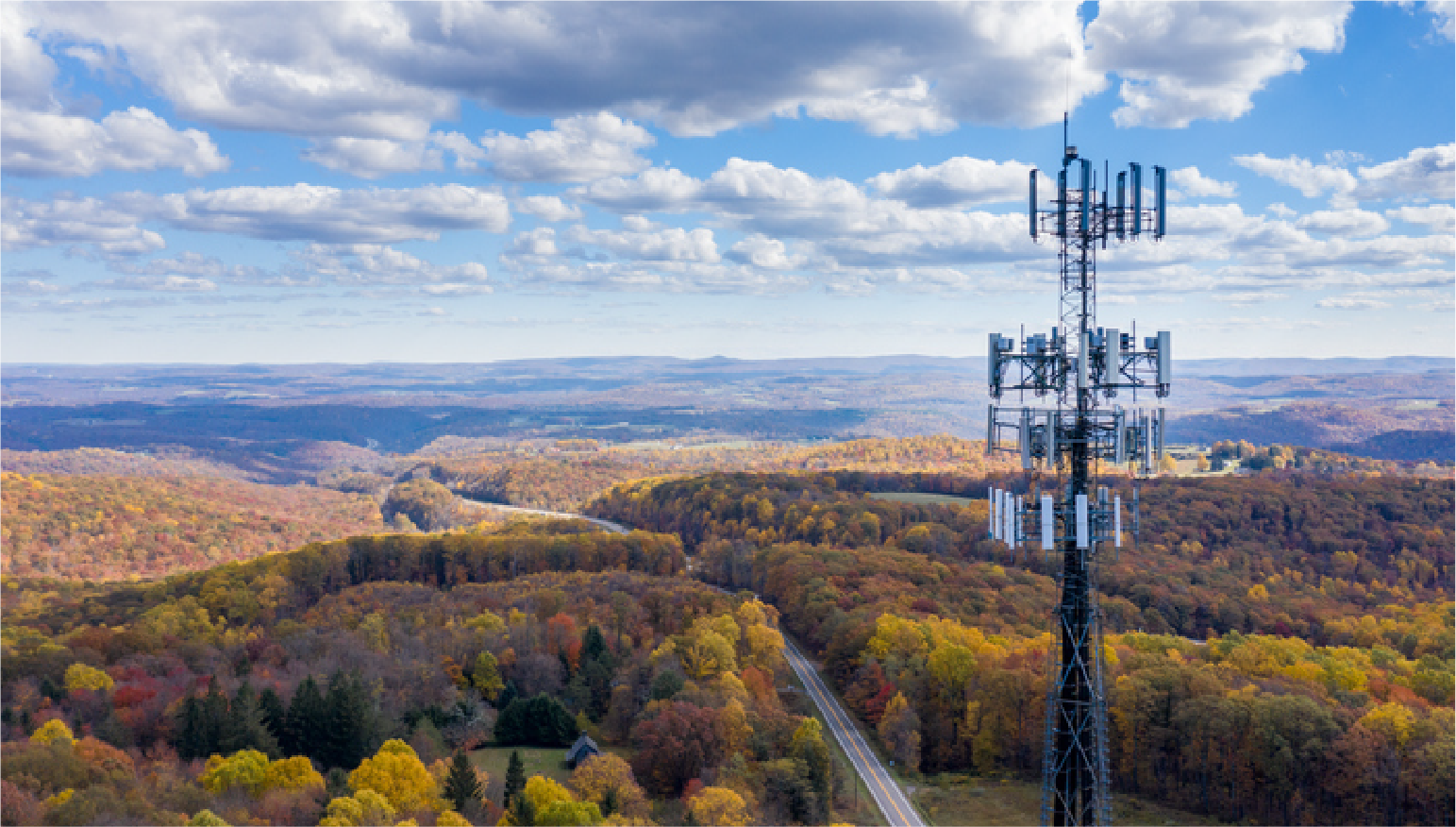

Billions of IoT devices rely on 2G and 3G cellular networks. These solutions offer IoT manufacturers an affordable way to keep devices connected anywhere in the world—indoors, outdoors, or on the go. But the technology is decades old, there are better solutions available, and there’s only so much bandwidth to go around.
And that’s why over the next few years, these networks are shutting down for good.
- Why are carriers shutting down their 2G and 3G networks?
- How should IoT businesses prepare for the sunsets?
- When is the sunset happening?
Some carriers have already sunsetted their 2G and 3G networks, pulling the plug to make room for newer cellular networks like 4G and 5G. Most other operators have at least made plans to shut them down. Thankfully, they’ve made these plans public—so you won't be caught unaware.
In this article, we’ll share when 2G and 3G networks are shutting down around the world, as well as what your business can do to prepare. But first, let’s look at why this is even happening.
1. Why are carriers shutting down their 2G and 3G networks?
Haven’t cellular carriers heard the phrase, “if it ain’t broke, don’t fix it”? 2G and 3G networks work just fine for most IoT applications. So why wouldn’t cellular providers just keep them around?
It all comes down to supply and demand.
2G and 3G technologies have already gone through extensive updates to increase their lifespans and get every last bit of use from their infrastructure. But carriers each have a limited range of radio frequencies they can dedicate their networks to. And the demand for 4G, 5G, LTE-M, and NB-IoT will only increase in the years to come.
Most 2G networks based on GSM use 850–1800 MHz or 900–1900 MHz bands. And 3G networks use bands between 850–1900 MHz or 900–2100 MHz. More advanced cellular technologies could use these same bands to provide higher data throughput and more valuable functionality. And all around the world, the opportunity these newer networks present is outgrowing the demand for continuing to support 2G and 3G infrastructure.
So with that in mind, it’s crucial that IoT manufacturers know when the sunset is happening and what they need to do before then.
2. How should IoT businesses prepare for the sunsets?
The last thing you want is to be using 2G or 3G networks when a carrier you rely on shuts their network down. Even if you still have years according to an operator’s current plan, you want to be proactive, not reactive. Here’s how to make sure you’re ready.
Evaluate your current IoT devices
Some of your devices may depend entirely on 2G or 3G connectivity. Others may simply use it as a fallback when other options like 4G or LTE-M aren’t available. You need to take inventory of every device that relies on this technology, assess which deployments and customers will need to make a transition, and identify the specific carriers your devices use.
You may simply be able to change your cellular service to a newer technology your devices are already compatible with. Or disable the functionality that searches for 2G and 3G networks. In many cases though, your devices may need significant upgrades to continue operating.
Know the dates that affect your deployments
Some carriers will continue supporting their 2G and 3G service for years. Some will make an immediate transition and sunset their entire service on a specific date, and others will gradually throttle down their 2G/3G service as they convert the available RF spectrum to other services. You don’t have to know what every carrier is doing. But you need to learn everything you can about how the carriers your business depends on are handling the transition.
Create a migration plan
Once you know the devices that need to switch and the dates they need to switch by, you’ll need to create a timeline for migrating to another solution. This may require coordinating significant updates and retrofitting with your customers. Or it could be a matter of planning out a transition to another service with your carriers. Your migration plan will depend on your business’ unique circumstances.
3. When is the sunset happening?
There’s actually no universal date for when carriers will shut down their 2G and 3G networks. Each Mobile Network Operator (MNO) has to decide when it makes the most sense for their business, based on local demand, their goals, and what they’re capable of. Many carriers have already phased out 2G service, and several plan to end 3G by the end of 2022.
Since you could have IoT deployments anywhere in the world, here’s a complete list of planned 2G and 3G sunsets by country and provider.
Africa
Africa is still behind other regions when it comes to reframing the spectrum to accommodate LTE and there have been no concrete dates for 2G and 3G shutdowns. However, in certain countries and networks, it has been reported that no 2G or 3G service is currently available.
| Country | Network Operator | 2G Status/ Sunset Date | 3G Status/ Sunset Date |
| Ghana | MTN | Gradual Phase out started | Gradual Phase out started |
| Equatorial Guinea | Getesa | No service | |
| Gabon | Azur | No service | |
| Gambia | Comium | No service | |
| Mali | Sotelma (Malitel) | No service | |
| Mauritania | 29.03.2026 | ||
| Mayotte / Reunion | Orange | 31.12.2024 | |
| South Africa | Vodacom | 31.12.2027 | 31.12.2027 |
| MTN | 31.12.2027 | 31.12.2027 | |
| Telkom | No service | 31.12.2027 | |
| Tunisia | Tunisie Telecom | Planned closure | |
| Tunisie Telecom | Planned closure |
Americas
North America, especially the USA is quickly phasing out 2G networks on a massive scale. In South America, Claro has already announced future shutdown dates of 2G and 3G in many countries.
| Country | Network Operator | 2G Status/ Sunset Date | 3G Status/ Sunset Date |
| Anguilla | Digicel | 19.02.2024 | 31.03.2029 |
| Antigua and Barbuda | Digicel | 31.03.2024 | 31.03.2027 |
| FLOW | 31.07.2024 | ||
| Argentina | Personal | 31.12.2023 | |
| Aruba | Digicel | 31.06.2024 | 31.03.2028 |
| Bahamas | BTC | 22.04.2024 | |
| Barbados | Digicel | 31.03.2025 | 31.03.2029 |
| FLOW | 22.04.2024 | ||
| Belize | Smart | No service | |
| Bermuda | ONE | 01.01.2017 | |
| Digicel | 31.01.2024 | 31.03.2027 | |
| Bonaire / Sint Eustatius / Saba / Curacao / Saint Martin (French part) | Digicel | 31.03.2025 | 31.03.2028 |
| TelCell SX | 01.01.2019 | ||
| British Virgin Islands | Carribean Cellular Telephone | 31.12.2025 | |
| Digicel | No service | 31.03.2027 | |
| FLOW | 08.04.2024 | ||
| Canada | Bell | No service | 01.03.2027 |
| Bragg | No service | No service | |
| Freedom | No service | Started: July 31, 2025 | |
| Rogers Wireless | No service | Started: August 7, 2025 | |
| Sasktel | No service | Start: December 31, 2025 | |
| TELUS | 31.05.2017 | 31.03.2026 | |
| Videotron | No service | Started: July 31, 2025 | |
| Wind | No service | ||
| Cayman Islands | Digicel | No service | 31.03.2027 |
| Cable and Wireless | 01.04.2024 | ||
| Chile | |||
| 31.12.2023 | |||
| WOM S.A. | No service | ||
| Colombia | Claro | 28.02.2023 | |
| Tigo | 01.11.2022 | ||
| Costa Rica | ICE | 01.07.2024 | |
| Claro | 31.12.2023 | ||
| Dominica | Digicel | 31.03.2027 | 31.03.2031 |
| FLOW | 22.04.2024 | ||
| Ecuador | CNT | 01.10.2014 | |
| El Salvador | Digicel | 31.03.2025 | 31.03.2030 |
| French Guiana / St Barthelemy / St. Martin / French Antilles / Guadeloupe / Martinique | Digicel Antilles | 31.12.2024 | 31.03.2029 |
| Orange Caraibe | 31.12.2025 | 31.12.2028 | |
| Grenada | Digicel | 31.03.2024 | 31.03.2031 |
| FLOW | 23.10.2023 | ||
| Guyana | One (Guyana Tel) | No service | |
| Digicel | 31.03.2027 | 31.03.2030 | |
| Haiti | Digicel | 31.03.2030 | 31.03.2027 |
| Jamaica | Digicel | 04.09.2024 | 31.03.2028 |
| FLOW | 26.08.2024 | ||
| Mexico | AT&T | 01.09.2019 | |
| Movistar | 30.04.2021 | ||
| Montserrat | FLOW | 22.04.2024 | |
| Panama | Claro | 31.12.2024 | 31.12.2026 |
| Digicel | 08.03.2020 | ||
| Puerto Rico | Claro | 31.03.2022 | Planned closure |
| Saint Vincent and the Grenadines | FLOW | 30.09.2023 | |
| St. Kitts and Nevis | Digicel | 31.03.2027 | 31.03.2031 |
| FLOW | 22.04.2024 | ||
| St. Lucia | Digicel | 31.03.2027 | 31.03.2031 |
| FLOW | 29.04.2024 | ||
| St. Pierre and Miquelon | SPM | No service | |
| St. Vincent and the Grenadines | Digicel | 31.03.2027 | 31.03.2031 |
| Flow | 30.09.2023 | ||
| Suriname | Digicel | 02.04.2025 | 31.03.2029 |
| Trinidad and Tobago | Digicel | 31.03.2025 | 31.03.2029 |
| Turks and Caicos Islands (UK) | Digicel | 30.06.2025 | 31.03.2029 |
| FLOW | 22.04.2024 | ||
| United States | AT&T | 01.01.2017 | 22.02.2022 |
| Limitless Mobile | No service | ||
| Union | 31.12.2019 | 22.09.2023 | |
| Viaero | 09.05.2018 | 3G begins Dec 2023. No end date (years) | |
| T-Mobile | March 2025 (started, end date not confirmed) |
01.07.2022 | |
| Verizon | No service | 31.12.2022 | |
| Uruguay | Movistar | 31.12.2023 | |
| Venezuela | Corporacion Digitel C.A. | No service | |
| Movistar Venezuela | 31.12.2025 | ||
| Telecomunicaciones Movilnet C.A. | 31.12.2025 |
Asia
East Asia is leading the way regarding switching off 2G networks with some other Asian countries following. In certain countries in the region, such as Japan, Macau, Singapore and South Korea, there is no 2G available at all. In addition, several network operators have already planned for future 3G shutdowns.
| Country | Network Operator | 2G Status/ Sunset Date | 3G Status/ Sunset Date |
| Bahrain | Batelco | 30.11.2021 | |
| Zain | 31.12.2022 | ||
| Viva/STC | 31.12.2023 | ||
| Bangladesh | Banglalink | EOY 2022 | |
| Grameenphone | 31.12.2025 | 25.03.2024 | |
| Bhutan | B-Mobile | Planned Closure | |
| TashiCell | Planned Closure | ||
| Brunei Darussalam | UNN | No service | No service |
| Cambodia | Smart | 27.06.2022 | |
| SEATel | No service | 07.06.2015 | |
| China | China Telecom | No service | |
| China Unicom | 14.09.2023 | 31.12.2025 | |
| Hong Kong | CMHK (China Mobile HK Limited) | No service | |
| 3 (Hutchison Telecommunications HK Holdings Ltd.) | No service | ||
| HKT (CSL) | 08.11.2024 | ||
| India | Airtel Punjab | 30.09.2020 | |
| Vodafone Delhi | 01.04.2022 | ||
| BSNL | Planned closure | ||
| Jio | No service | No service | |
| Indonesia | AXIS | 31.03.2022 | |
| Indosat Ooredoo | 01.12.2022 | ||
| 3 | 31.12.2022 | ||
| Telkomsel | 31.05.2023 | ||
| Israel & Palestine | HOT mobile | No service | 31.12.2025 |
| Pelephone | No service | 31.12.2025 | |
| Golan Telecom | No service | 31.12.2025 | |
| Partner | 31.12.2025 | 31.12.2025 | |
| Cellcom | 31.12.2025 | 31.12.2025 | |
| Japan | KDDI (au) | No service | 31.03.2022 |
| SoftBank | No service | 15.04.2024 | |
| NTT DOCOMO | No service | 31.03.2026 | |
| Umniah | 16.11.2021 | ||
| Kazakhstan | Tele2 | Started September 2025 | |
| Korea (South) | KT | No service | No service |
| Kuwait | Wataniya | 30.06.2023 | |
| Macao | CTM | No service | 04.06.2025 |
| Hutchison (3) | No service | 04.06.2025 | |
| SmarTone | No service | 04.06.2025 | |
| Malaysia | Maxis | 31.12.2021 | |
| Celcom | 31.12.2021 | ||
| U Mobile | No service | 31.12.2021 | |
| DiGi | 31.12.2021 | ||
| YES | No service | No service | |
| Mongolia | Skytel | 06.11.2025 | 31.10.2035 |
| Myanmar | ATOM (Telenor) | 31.12.2024 | 31.12.2025 |
| Mytel (Viettel) | No service | ||
| Nepal | Ncell | Planned Closure | |
| Nepal Telecom | 31.12.2025 | no service | |
| Oman | Omantel (Oman Mobile) | 31.12.2025 | |
| Ooredoo | 31.12.2025 | ||
| Vodafone | 31.12.2025 | ||
| Pakistan | Telenor | 31.12.2025 | 31.12.2025 |
| Mobilink | No service | ||
| Philippines | Smart | Planned Closure | 30.09.2025 |
| Globe | Planned Closure | ||
| DITO | Planned Closure | ||
| Saudi Arabia | STC Al-Jawal | 31.12.2023 | |
| Singapore | M1 | No service | No service |
| SingTel | No service | No service | |
| StarHub | No service | No service | |
| TPG Telecom | No service | No service | |
| Sri Lanka | Dialog | 15.11.2023 | |
| Mobitel | 30.06.2023 | ||
| Taiwan | APTG | No service | |
| Chunghwa | 01.06.2017 | 30.06.2024 | |
| FarEasTone | 01.06.2017 | 30.06.2024 | |
| T Star | 31.12.2018 | 30.06.2024 | |
| Taiwan Mobile | 01.06.2017 | 30.06.2024 | |
| Thailand | TrueMove | 30.09.2026 | 30.09.2026 |
| United Arab Emirates | DU | 31.12.2023 | |
| Etisalat | 31.12.2023 | ||
| Vietnam | Viettel | No service | No service |
| Gtel Mobile (Gmobile) | No service | No service | |
| Mobifone | No service | ||
| Vietnamobile | No service | 30.09.2028 | |
| Vinaphone | No service | 30.09.2028 | |
| Yemen | MTN | No service | |
| SabaFon | No service | ||
| Y-Telecom | No service |
Europe
In some European countries and networks, it could be the case where 2G may even outlive 3G. For example, Norwegian MNO Telenor announced 3G switch-off in 2020 – five years before 2G. Likewise, Vodafone has announced it is to phase out 3G networks across many European countries in 2021 and 2022.
| Country | Network Operator | 2G Status/ Sunset Date | 3G Status/ Sunset Date |
| Albania | Vodafone | 31.12.2025 | |
| Andorra | Andorra Telecom (Mobiland) | 01.09.2026 | |
| Armenia | Team | 15.11.2025 | |
| Austria | Drei Austria | 31.03.2025 | |
| A1 | 30.06.2025 | ||
| T-Mobile | 12.06.2024 | ||
| Belgium | Base | 31.12.2027 | 30.09.2024 |
| Orange | 31.12.2030 | 31.07.2025 | |
| Proximus | 31.12.2025 | ||
| Bulgaria | A1 | 31.12.2025 | |
| Croatia | A1 | Gradual Shutdown Started: Feb 2025; Final: End 2026 | |
| Hrvatski Telekom (T-Mobile) | 31.03.2025 | ||
| Cyprus | CYTAmobile-Vodafone | 31.12.2027 | |
| Czech Republic | Vodafone | 31.12.2025 | 31.03.2021 |
| O2 | 30.11.2021 | ||
| T-Mobile | 01.01.2028 | 30.11.2021 | |
| Denmark | Telenor | 17.04.2023 | |
| Hi3G | No service | 01.12.2025 | |
| Telia | 31.03.2023 | ||
| TDC | 31.12.2023 | ||
| Estonia | Elisa | 31.12.2029 | No service |
| Telia | 31.12.2029 | 31.12.2023 | |
| Tele2 | 31.12.2025 | ||
| Falkland Islands | Sure | No service | |
| Finland | DNA | 31.12.2029 | 31.01.2024 |
| Elisa | 31.10.2023 | ||
| Telia | 31.12.2024 | ||
| Alands (Alcom) | 03.02.2025 | ||
| France | Free Mobile | No service | 15.12.2025 |
| Bouygues | 31.12.2026 | 31.12.2029 | |
| SFR | 31.12.2026 | 31.12.2028 | |
| Orange | 31.03.2026 | 31.12.2028 | |
| Germany | Telekom | 30.06.2028 | 30.06.2021 |
| Vodafone | 31.12.2028 | 30.06.2021 | |
| Telefonica O2 | 31.12.2021 | ||
| Greece | Cosmote | 22.02.2022 | |
| Vodafone | 31.12.2025 | 30.04.2023 | |
| Wind | 31.12.2022 | ||
| Greenland | TELE | 31.03.2028 | 30.05.2023 |
| Hungary | T-Mobile | 30.06.2022 | |
| One (Vodafone) | 31.12.2025 | 01.11.2024 | |
| Yettel | 13.11.2023 | ||
| Iceland | Nova | No service | Started shutdown: 2025-09-01; Final: 2025-12-31 |
| Siminn | 31.12.2025 | 31.12.2025 | |
| Vodafone | 31.12.2024 | 31.12.2025 | |
| Vodafone | No service | ||
| Italy | Vodafone | 28.02.2021 | |
| ILIAD | No service | ||
| Telecom Italia Mobile | 31.12.2029 | 30.12.2022 | |
| Wind Tre | Started: May/June 2024, Final: 31 Dec 2025 | ||
| Latvia | Bite | Shutdown in progress | |
| LMT | 31.12.2025 | ||
| Tele2 | 05.03.2025 | ||
| Liechtenstein | FL1 | May 2025 (started, end date 31/12/2025)Started shutdown: May 2025; Final: 31/12/2025 | 31.12.2023 |
| Lithuania | Bite | 31.12.2028 | 31.12.2025 |
| Telia | 31.12.2028 | 31.12.2022 | |
| Tele2 | 31.12.2025 | ||
| Luxembourg | Post | 31.12.2026 | 30.06.2022 |
| Tango | 31.01.2024 | ||
| Orange | 31.12.2030 | No service | |
| Macedonia | Telekom.mk | 31.12.2022 | |
| Malta | GO | Started: 2025 September | |
| Melita | No service | ||
| Monaco | Monaco Telecom | No service | |
| Montenegro | T-Mobile | 31.12.2023 | |
| Mtel | 31.12.2029 | 01.01.2026 | |
| Netherlands | Vodafone (Ziggo) | 31.12.2026 | 04.02.2020 |
| KPN | 01.12.2027 | 01.04.2022 | |
| T-Mobile (Odido) | 01.06.2023 | 01.08.2026 | |
| Norway | Ice | 27.05.2025 | No Service |
| Telenor | 31.12.2027 | 31.12.2021 | |
| Telia | 31.12.2025 | 09.11.2021 | |
| Poland | Orange | 31.12.2030 | Shutdown started; Final Closure: 31/12/2025 |
| Play | Started shutdown April 2025; No Final date yet | ||
| T-Mobile | 31.12.2030 | 30.04.2023 | |
| Portugal | MEO | 31.01.2024 | |
| Romania | Telekom | 01.07.2022 | |
| Vodafone | 31.12.2025 | 01.07.2025 | |
| Orange | 31.12.2030 | 31.12.2025 | |
| Digi Mobil | 29.08.2023 | ||
| Russia | Beeline | Planned closure | |
| MOTIV (LLC Ekater…) | No service | ||
| Serbia | A1 | Mid-2025 | |
| Slovakia | Orange | 31.12.2030 | 20.02.2024 |
| O2 | 31.01.2026 | ||
| Slovak Telekom | 31.12.2023 | ||
| Telekom | 30.09.2022 | ||
| Slovenia | A1 | 31.12.2030 | 30.06.2023 |
| Spain | Orange | 31.12.2030 | 31.12.2027 |
| Movistar | Shutdown started; Final: end 2025 | ||
| Vodafone | 07.11.2022 | ||
| Sweden | Tele2 | 31.12.2025 | 31.12.2025 |
| Telia | 31.12.2027 | 31.12.2023 | |
| Telenor | 31.12.2025 | 31.12.2025 | |
| 3 | No service | 01.12.2025 | |
| Switzerland | Salt | 31.12.2020 | |
| Sunrise | 01.03.2023 | 31.07.2025 | |
| Swisscom | 31.12.2020 | 31.12.2025 | |
| UK Territory | Jersey Telecom (JT) | Shutdown started: 01/01/2025 | |
| Ukraine | Lifecell | 31.12.2030 | |
| Kyivstar | 31.12.2030 | ||
| Vodafone | 31.12.2030 | ||
| 3Mob | 01.07.2025 | 31.12.2030 | |
| United Kingdom | EE | 31.05.2029 | 29.02.2024 |
| 3 | No service | 31.12.2024 | |
| O2 | 01.10.2025 | Shutdown started: 02Apr2025; Final: 31Dec2025 | |
| Vodafone | 31.12.2030 | 28.02.2024 |
Oceania
Except for Vodafone New Zealand, most large operators have already switched off 2G service in Australia and New Zealand. On the other hand, there has been no plan for a massive 3G switch-off in the region.
| Country | Network Operator | 2G Status/ Sunset Date | 3G Status/ Sunset Date |
| Australia | Telstra | No service | No service |
| Optus | No service | No service | |
| Vodafone | No service | No service | |
| Guam / N. Mariana Islands | Docomo | No service | 30.06.2026 |
| IT&E | No service | 31.03.2025 | |
| New Caledonia | OPT (Mobilis) | 31.12.2025 | 01.01.2030 |
| New Zealand | 2degrees | No service | 31.12.2025 |
| Spark | No service | 31.03.2026 | |
| Vodafone | 31.12.2025 | 31.12.2025 | |
| Norfolk Island | Norfolk Telecom | No service |
Non-Terrestrial
| Network Operator | 2G Status/ Sunset Date | 3G Status/ Sunset Date |
| Wireless Maritime Services | sunset activities started |
Please note:
* "No service on all networks" also apply to other networks in the country that are not specified in the table
** All information in this article has been gathered from open sources at best effort. EMnify takes no liability regarding the correctness.
Find the right solution that's right for you
At emnify, we give your devices carrier-agnostic IoT SIMs that provide access to more than 540 networks in over 180 countries. Not sure how you’re going to handle the transition away from 2G or 3G connectivity? Our experts can find the right coverage for you and help you develop a migration plan.
Get in touch with our IoT experts
Discover how emnify can help you grow your business and talk to one of our IoT consultants today!
.jpg)
Director of Customer Success at emnify, Jean-Eudes is an expert in IoT.


